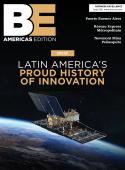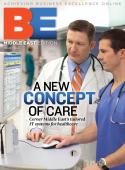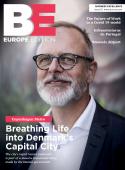Model of efficiency┬áThe University of Saskatchewan was modeled after some of the most renowned campuses in North America. Keith Regan learns how the campus remains true to its past while looking to the future. Before ground was broken on the first buildings at the University of Saskatchewan in 1910, the schoolÔÇÖs first president gathered a handful of trustees and took them on a whirlwind tour of North American campuses, traversing the continent by train for three and a half months to visit places such as Princeton University and Washington University in St. Louis, campuses known for their aesthetic beauty. They returned determined to model the Saskatoon campus, situated on 1,865 acres near the city center, in the same collegiate gothic style. After some back-and-forth between the architects and the presidentÔÇöcaptured in archived lettersÔÇöthe first five buildings soon rose, built out of locally gathered fieldstone, says Colin Tennent, university architect and associate vice president of facilities. ÔÇ£There is a very large core campus that has remained precisely as it was, and after a period of deviation during the 1960s and ÔÇÖ70s, much of the expansion over the years has been sympathetic to the original style,ÔÇØ he says, adding that the result is a campus that always impresses visitors. At the heart of that original campus is the 1912 College Building, which was designated a provincial heritage building in 1982 and granted federal heritage status in 2000.Today, Tennent heads up a facilities department that manages some 167 buildings and 5.4 million square feet under roof. Like scores of others across North America, the university is facing some deferred maintenance but is tackling that backlog along with new construction projects with the help of an integrated planning process. ÔÇ£WeÔÇÖre a relatively small province, and as a result it has always been a struggle to find the resources to do what we need,ÔÇØ he adds. More recently, however, commitment from the federal government has helped drive research grant funding, and U of S has been a major beneficiary. In fact, two of twelve major Canadian science projects are being built by the university. ÔÇ£There seems to be a critical mass that has been reached, and thereÔÇÖs recognition that we have a great foundation of facilities to build on to help us attract top talent,ÔÇØ Tennent says. The two major science projects are the International Vaccine Center, or InterVac, a Level 3 Ag Bio containment facility where zoonotic agentsÔÇödiseases that can be transmitted between animals and humansÔÇöwill be studied. The $140 million project is due to be topped off early in 2009 and ready for operations in 2010, and it will be one of only three in the world of its kind. ÔÇ£ItÔÇÖs going to be one of CanadaÔÇÖs top one or two facilities in terms of protecting against infectious agents,ÔÇØ notes Tennent. The second, completed science project is the Canadian Light Source, the countryÔÇÖs only synchrotron facility and one of about 70 worldwide. The linear accelerator-based facility, which had an initial capital cost of $173 million to build, has recently been outfitted with a biomedical hutch to enable the light source to be used to study biological conditions and treatments. Together with other programs, those projects have helped the university attract a large amount of research funding given its size, Tennent says. The new construction and an aggressive menu of updating, deferred maintenanceÔÇöthe university estimates a backlog of $600 million worth of workÔÇöand renovations are now being carried out under the umbrella of an integrated planning process. The campus is now starting the second four-year planning cycle that takes budgets and academic programs as well as capital needs and infrastructure maintenance into account. ÔÇ£Every campus is in this same boat. Deferred maintenance has caught up to all of us. The problem was that for 40 years the senior administration of all universities tended to be more attuned to academic needs, and thatÔÇÖs where the resources went,ÔÇØ Tennent says.The integrated process has raised other needs to the same level and created a higher awareness among senior leadership of the breadth and depth of campus needs in other areas. Using a ReCAPP database program, the university can identify areas where failing to invest in upkeep may lead to more costly problems down the road, data that can be used to convince provincial leaders of the need to fund ongoing maintenance. By working through a university-wide capital plan as well as an infrastructure master plan, TennentÔÇÖs staff of 500 people has been able to review maintenance needs on 20 percent of the campusÔÇÖ buildings and infrastructure each year since 2001. In addition to concrete plans, the forward-looking process also leaves room for the unexpected, including any funding windfalls. ÔÇ£ThereÔÇÖs room at the margins for what weÔÇÖd like to do as well as what we know is feasible.ÔÇØThe plans have sustainability as a key component looking ahead. Most new buildings will achieve at least Silver-level LEED certification, while a new college of law that just finished construction is expected to achieve Gold certification. The planning process has also yielded another valuable innovation at the universityÔÇöa management platform for delivering capital projects. The platform is still evolving, but it emphasizes clear identification of responsibilities for project decisions, designating an executive decision-maker who makes final calls on project details on behalf of the universityÔÇÖs board of governors. It also creates a central point of intelligence for how a project fits into the larger plans of the school, Tennent says, and gives each project a clearly identifiable champion as budget discussions unfold. The university began moving toward the setup after a major project that involved multiple disciplines on campus bogged down when department heads would make end-runs around project leaders to bend the ear of senior leaders. That in turn would lead to project delays, mid-project changes and, inevitably, cost overruns. ÔÇ£WeÔÇÖve gotten very good feedback on the approach when weÔÇÖve discussed it outside the campus or trotted it out at conferences with our peers,ÔÇØ Tennent says. ÔÇ£Right from the start, everyone knows whatÔÇÖs expected of them and when they can provide input and when that window of time has closed. WeÔÇÖve been told the kind of governance weÔÇÖre applying here could account for as much as 20 percent greater efficiency.ÔÇØ









